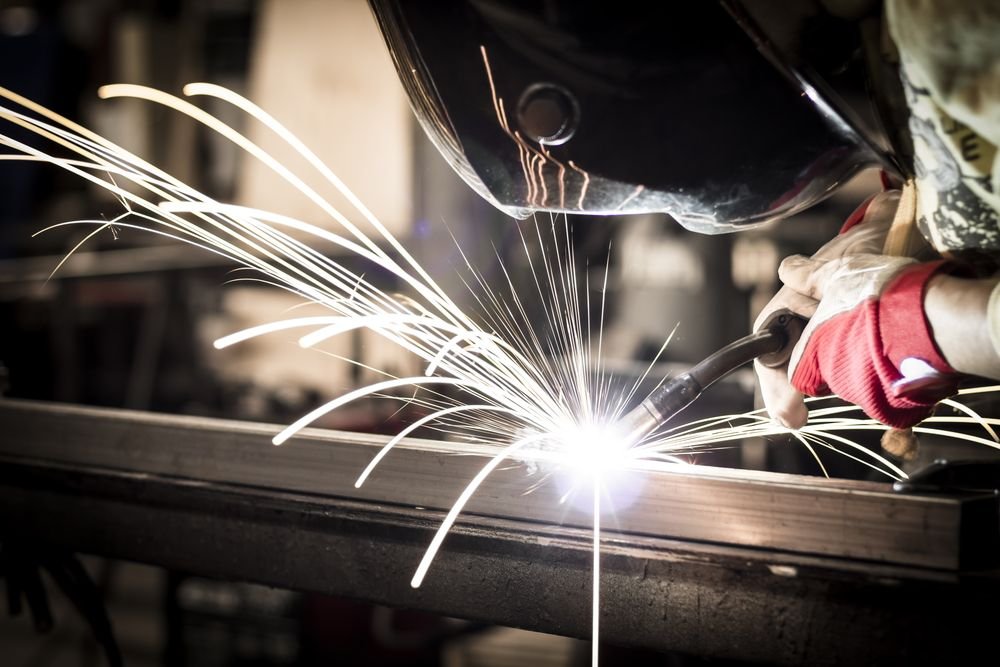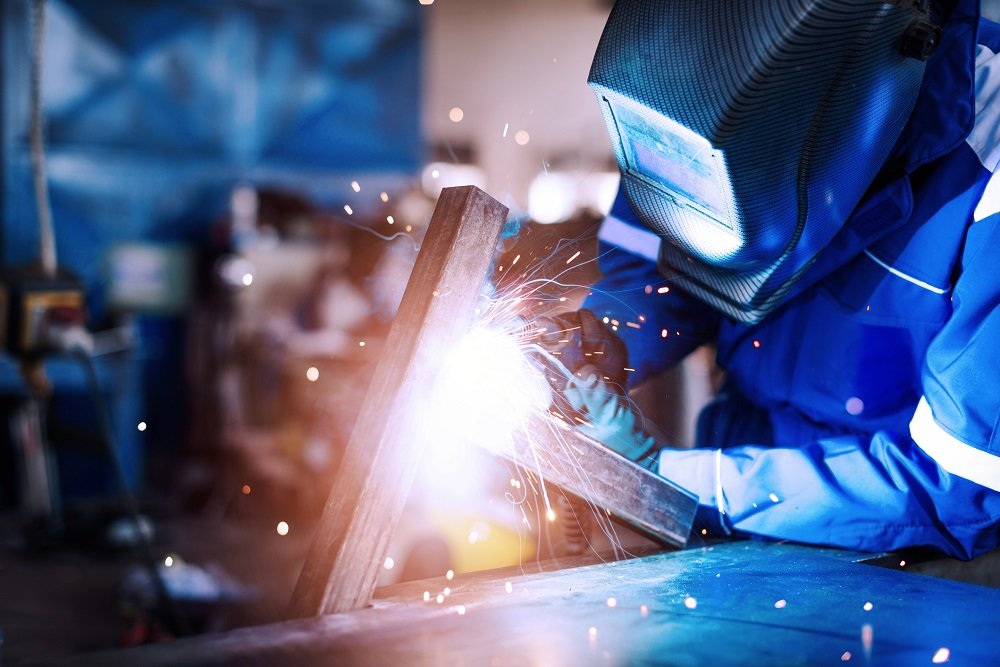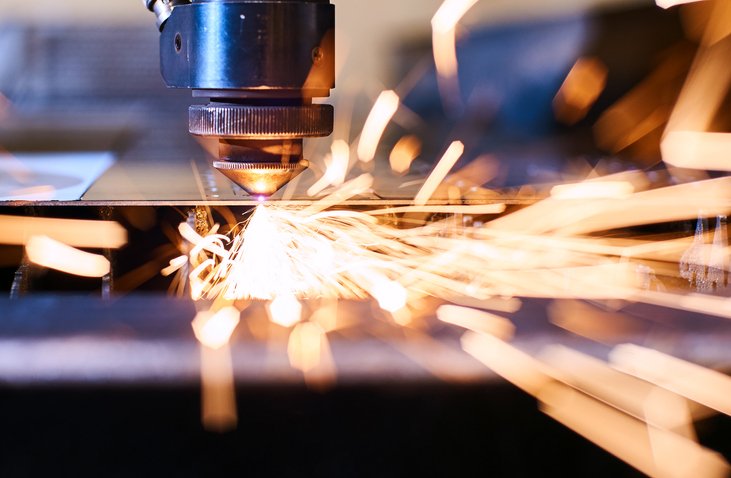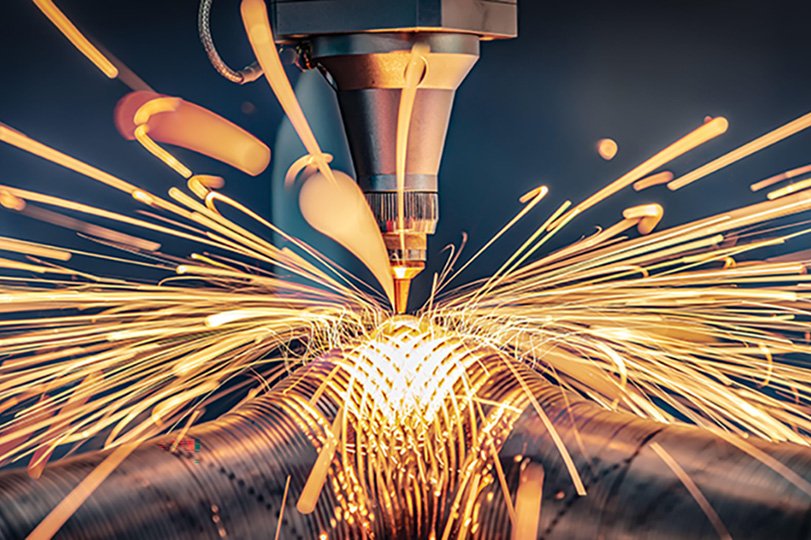Metal fabrication stands as a cornerstone of modern manufacturing, encompassing a diverse array of techniques and processes that shape raw metal into usable products and structures. From the humble beginnings of forging and casting to the precision of computer-controlled machining and laser cutting, metal fabrication has evolved into a sophisticated discipline that underpins countless industries worldwide.
At its core, metal fabrication involves the transformation of metal materials through cutting, bending, welding, and assembling, with each step requiring skill, precision, and a deep understanding of metallurgy and engineering principles. In this exploration of metal fabrication, we delve into its definition, techniques, applications, and significance in today’s industrial landscape.
What is Metal Fabrication
In essence, “metal fabrication” refers to the process of crafting products or structures through the manipulation of metal materials, involving cutting, bending, and assembling. It’s widely recognized as a value-added procedure, transforming raw metal into tangible goods or constructions.
Typically, metal fabrication projects progress through three main stages: first, the design phase where precise shop drawings are drafted to specified measurements; next, the fabrication phase where cutting, bending, and assembling take place; and finally, the installation phase where the finished product or structure is assembled, either partially or entirely.
Metal fabricators commonly handle an array of raw materials, including various types of metals such as plate metal, expanded metal, welding wires and rods, and cast metal. In essence, fabrication serves as a pivotal step in the production of any completed metal component or structure.
Fabricators are often employed in machine shops or specialized metal fabrication facilities, catering to all aspects from material preparation to fabrication. While less prevalent compared to other forms of metal fabrication discussed later in this article, occupations like blacksmiths, boilermakers, and ironworkers have also traditionally fallen under the umbrella of metal fabrication.

Types of Metal Fabrication
Before raw metal material can be fashioned into the components and structures that populate our world, it must undergo a series of metal fabrication techniques. These methods, diverse in their applications, are integral to structural, industrial, and decorative endeavors alike.
Metal fabrication encompasses a multitude of processes, often employed in tandem to achieve desired outcomes. Among these, cutting, metal stamping, extrusion, forging, and casting stand out as fundamental techniques, each showcasing the versatility and adaptability of metals in myriad applications.
Cutting
Arguably the oldest form of metalworking, cutting remains a cornerstone technique in fabrication. Whether executed through simple handheld tools or complex machinery, cutting involves the removal of excess material from a metal workpiece. This process, integral to shaping materials like diamond plate, corrugated sheets, and steel bars, enables the creation of precise components for various applications.
Metal Stamping
Distinctly tailored for sheet metals, metal stamping finds extensive use in industries such as automotive manufacturing. By utilizing dies to shape and form sheet metal, stamping produces intricate components like trunk lids, wheel hubcaps, and doors, offering both standardized and customizable solutions.
Welding
Welding, the art of joining metals, spans a spectrum of techniques, each suited to specific applications. Whether employing Gas Metal Arc Welding (GMAW), stick welding, or Gas Tungsten Arc Welding, welders fuse metals together to create durable, seamless connections. From pipelines to automotive assemblies, welding finds widespread use across diverse sectors.
Extrusion
While not exclusive to metals, extrusion plays a crucial role in shaping steel and aluminum profiles for structural and architectural applications. Through high-pressure processes, solid metal billets are transformed into intricate cross-sectional profiles, offering versatility and precision in component fabrication.
Forging
Evoking images of ancient craftsmanship, forging remains a timeless method of shaping metals through compression forces. Whether through hot forging, cold forging, or open die forging, this technique produces components of varying sizes and complexities, embodying strength and durability in their construction.
Casting
Utilizing the transformative power of heat, metal casting produces intricate shapes with unparalleled efficiency. By pouring molten metal into molds and allowing it to solidify, manufacturers create complex components for industries ranging from automotive to aerospace. While offering unparalleled design freedom, casting demands meticulous attention to prevent structural flaws and ensure product integrity.
Advantages of Metal Fabrication

When it comes to selecting manufacturing methods, metal fabrication stands out for its myriad benefits and unmatched versatility. Offering a diverse array of customization options, metal fabrication empowers designers and engineers to bring their visions to life with precision and finesse. By harnessing advanced techniques and cutting-edge technology, metal fabricators can create complex shapes and structures that align seamlessly with specific design requirements, surpassing the limitations of alternative manufacturing processes.
Moreover, the inherent properties of metal lend themselves to fabrication, ensuring that fabricated products exhibit exceptional strength and durability. Whether destined for use in industrial machinery, architectural marvels, or everyday consumer goods, metal-fabricated components boast resilience and longevity, capable of withstanding the rigors of demanding environments and prolonged use.
Furthermore, the versatility of metal fabrication extends beyond mere functionality, offering aesthetic appeal and design flexibility. From sleek and modern architectural features to intricately detailed components for automotive and aerospace applications, metal fabrication enables the realization of diverse artistic visions and stylistic preferences.
>>> Read more: What Types of Materials Can Precision CNC Machining Work With?
What factors should be considered when choosing a metal fabrication company for a project?
- Experience and Expertise: Assess the company’s experience in handling similar projects and their expertise in the specific type of metal fabrication required.
- Capabilities and Equipment: Consider the company’s range of capabilities, including machining, welding, cutting, and finishing, as well as the quality and condition of their equipment and machinery.
- Quality Assurance: Evaluate the company’s quality control processes and certifications to ensure they meet industry standards and can consistently deliver high-quality products.
- Materials and Resources: Check if the company has access to a wide range of materials and resources needed for the project, including metals, tools, and skilled personnel.
- Customization and Flexibility: Determine if the company can accommodate custom requirements and provide flexible solutions tailored to the project’s specifications and timeline.
- Communication and Collaboration: Look for a fabrication company that maintains open communication channels and fosters collaboration throughout the project, ensuring transparency, feedback, and alignment with your goals.
- Cost and Pricing: Compare quotes from multiple fabrication companies to assess their pricing structure and ensure it aligns with your budget constraints while still meeting quality standards.
- Reputation and References: Research the company’s reputation in the industry, read reviews, and ask for references or case studies of past projects to gauge their track record and customer satisfaction.
- Location and Accessibility: Consider the company’s location and proximity to your project site to minimize transportation costs and logistical challenges.
- Customer Service and Support: Evaluate the company’s responsiveness, availability, and willingness to provide ongoing support and maintenance after project completion, ensuring a positive and collaborative working relationship.
MaTec Vietnam specializes in metal fabrication, utilizing advanced technologies and expertise to provide top-notch products and solutions. Our team of skilled professionals is committed to precision and excellence, guaranteeing that every fabricated component meets the most rigorous standards of quality and performance.
Whether you require customized metal parts for industrial machinery, architectural endeavors, or consumer goods, MaTec Vietnam delivers dependable metal fabrication services tailored precisely to your needs.

FAQ
What are the advantages of CNC machining in metal fabrication?
- Precision: CNC machines operate with high accuracy and repeatability, ensuring precise cuts and dimensions in metal components.
- Complex Geometry: CNC machining can create intricate and complex shapes that may be difficult or impossible to achieve with manual machining methods.
- Efficiency: With automated processes and programming, CNC machining reduces the need for manual intervention, leading to faster production times and increased productivity.
- Consistency: CNC machines produce identical parts with consistent quality, minimizing variations and ensuring uniformity across batches.
- Flexibility: CNC machines can easily switch between different machining operations and materials, allowing for versatile production capabilities.
- Cost-Effectiveness: Despite initial setup costs, CNC machining offers long-term cost savings through reduced labor expenses and improved material utilization.
- Reduced Waste: CNC machining generates minimal waste compared to traditional machining methods, optimizing material usage and reducing environmental impact.
- Scalability: CNC machining is scalable to accommodate small prototype runs as well as large-scale production volumes, offering flexibility to adapt to changing demand.
- Quality Control: CNC machines can be equipped with sensors and monitoring systems to ensure quality control throughout the fabrication process, minimizing errors and defects.
- Innovation: CNC machining enables innovation and experimentation with new designs and materials, fostering creativity and pushing the boundaries of metal fabrication capabilities.
How is structural steel fabrication different from general metal fabrication?
Structural steel fabrication differs from general metal fabrication primarily in its focus and scope. While general metal fabrication encompasses a wide range of metalworking processes and applications, including the creation of components for various industries and purposes, structural steel fabrication specifically revolves around the production of steel components used in structural frameworks, such as buildings, bridges, and infrastructure projects.
Structural steel fabrication requires specialized expertise and adherence to strict industry standards and codes, as the fabricated components must meet rigorous structural requirements for safety, stability, and load-bearing capacity.
Additionally, structural steel fabrication often involves larger and heavier components, as well as more complex engineering considerations, compared to the relatively smaller-scale and versatile nature of general metal fabrication projects.
What types of materials are commonly used in metal fabrication?
Common materials used in metal fabrication include steel, aluminum, stainless steel, brass, copper, and various alloys. These materials offer a wide range of properties and characteristics, allowing fabricators to choose the most suitable material based on factors such as strength, corrosion resistance, conductivity, and aesthetics. Additionally, specialty materials such as titanium, nickel, and exotic alloys may be used for specific applications requiring exceptional performance under extreme conditions.

Conclusion
Metal Fabrication is a vital process that encompasses a diverse array of techniques and applications, playing a pivotal role in various industries worldwide. From precision components for aerospace engineering to structural frameworks for architectural projects, metal fabrication delivers solutions that are essential for modern manufacturing and construction.
For those seeking expert metal fabrication services, MaTec Vietnam stands out as a reputable choice. With over 10 years of experience, MaTec has earned the trust of numerous satisfied clients, successfully completing over 50 engineering projects.
Collaborating with a network of over 10 industry partners and supported by a team of more than 30 skilled machinists and engineers, MaTec Vietnam is committed to delivering high-quality products and solutions tailored to meet the unique needs of each project.
Whether it’s custom metal parts for industrial machinery, architectural structures, or consumer products, MaTec Vietnam offers reliable expertise and dedication to excellence in metal fabrication.
